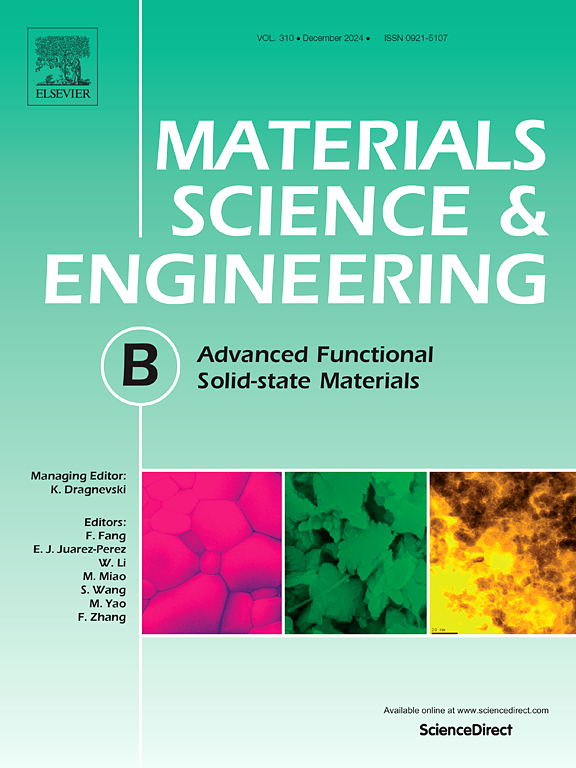可穿戴式自供电电化学传感器,采用MXene/PU复合材料和先进电极,可在运动过程中进行无创乳酸检测
IF 4.6
3区 材料科学
Q2 MATERIALS SCIENCE, MULTIDISCIPLINARY
引用次数: 0
摘要
在这里,我们报道了一种基于mxene集成水凝胶和酶修饰碳布电极的柔性自供电乳酸检测生物传感器的设计。通过在HF中选择性蚀刻Ti3AlC2合成MXene,并将其掺入聚吡咯/聚氨酯水凝胶中以提高其导电性和柔韧性。将乳酸氧化酶(LOD)和胆红素氧化酶(BOD)固定在还原氧化石墨烯(rGO)包覆活性炭布(ACC)上制备阳极和阴极。电化学阻抗谱显示电荷转移电阻降低,而循环伏安法证实具有较强的生物电催化活性。该传感器的最大功率密度为~ 3 μW。在100 mM乳酸浓度下,cm−2,并在生理相关浓度下表现出线性电流响应。由于电子迁移率和离子电导率的提高,与基于mxene的水凝胶的集成使电流输出增加了15倍。力学测试表明,在500次弯曲循环下,其电阻率和结构稳定,验证了其可穿戴性。本文章由计算机程序翻译,如有差异,请以英文原文为准。

Wearable self-powered electrochemical sensor with MXene/PU composite and advanced electrodes for non-invasive lactate detection during physical activity
Here, we report the design of a flexible, self-powered biosensor for lactate detection based on MXene-integrated hydrogels and enzyme-modified carbon cloth electrodes. MXene was synthesized via selective etching of Ti3AlC2 in HF and subsequently incorporated into a polypyrrole/polyurethane hydrogel to enhance conductivity and flexibility. The anode and cathode were fabricated by immobilizing lactate oxidase (LOD) and bilirubin oxidase (BOD) on reduced graphene oxide (rGO)-coated activated carbon cloth (ACC). Electrochemical impedance spectroscopy revealed reduced charge transfer resistance, while cyclic voltammetry confirmed strong bioelectrocatalytic activity. The sensor demonstrated a maximum power density of ∼3 μW.cm−2 at 100 mM lactate and exhibited a linear current response across physiologically relevant concentrations. Integration with the MXene-based hydrogel enabled a 15-fold increase in current output due to improved electron mobility and ionic conductivity. Mechanical testing showed stable resistivity and structure under 500 bending cycles, validating its suitability for wearable use.
求助全文
通过发布文献求助,成功后即可免费获取论文全文。
去求助
来源期刊

Materials Science and Engineering: B
工程技术-材料科学:综合
CiteScore
5.60
自引率
2.80%
发文量
481
审稿时长
3.5 months
期刊介绍:
The journal provides an international medium for the publication of theoretical and experimental studies and reviews related to the electronic, electrochemical, ionic, magnetic, optical, and biosensing properties of solid state materials in bulk, thin film and particulate forms. Papers dealing with synthesis, processing, characterization, structure, physical properties and computational aspects of nano-crystalline, crystalline, amorphous and glassy forms of ceramics, semiconductors, layered insertion compounds, low-dimensional compounds and systems, fast-ion conductors, polymers and dielectrics are viewed as suitable for publication. Articles focused on nano-structured aspects of these advanced solid-state materials will also be considered suitable.
 求助内容:
求助内容: 应助结果提醒方式:
应助结果提醒方式:


